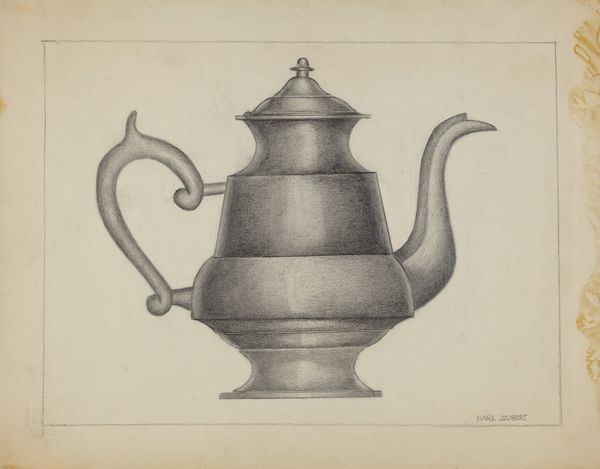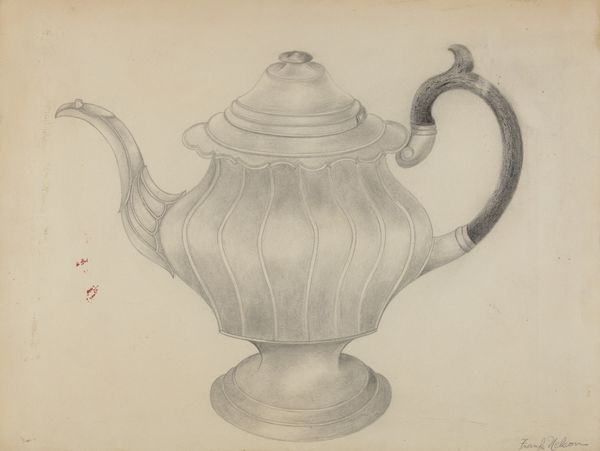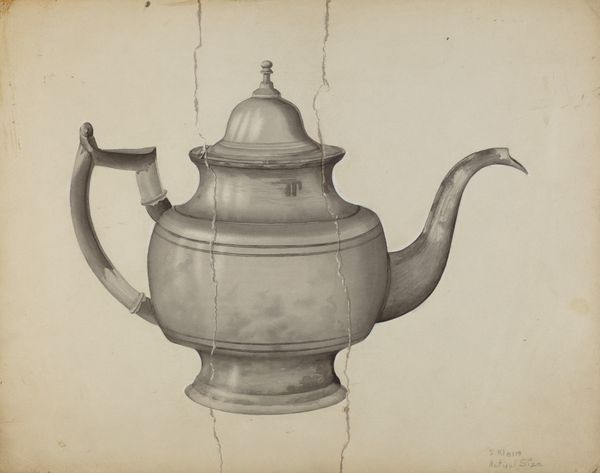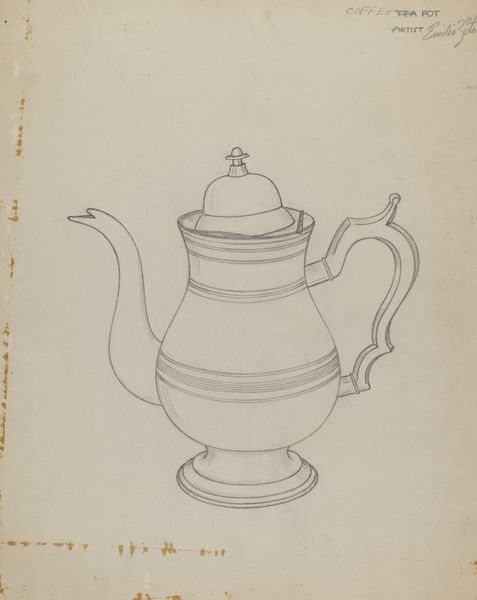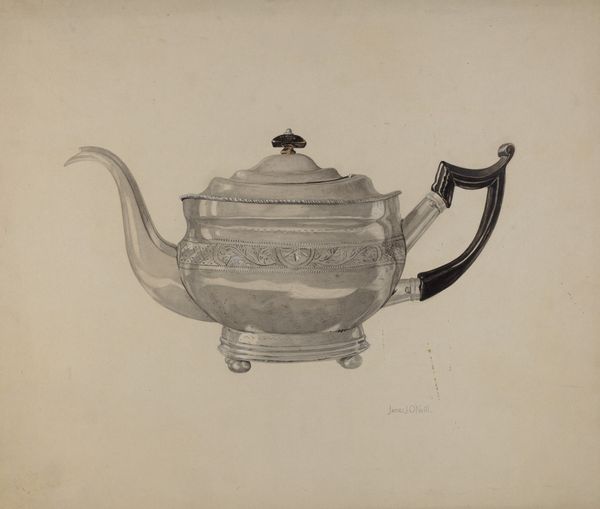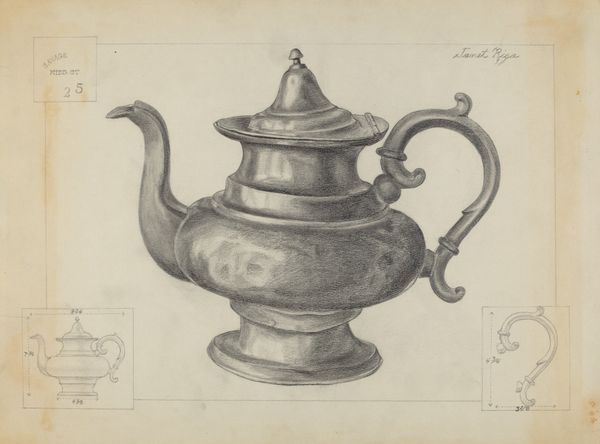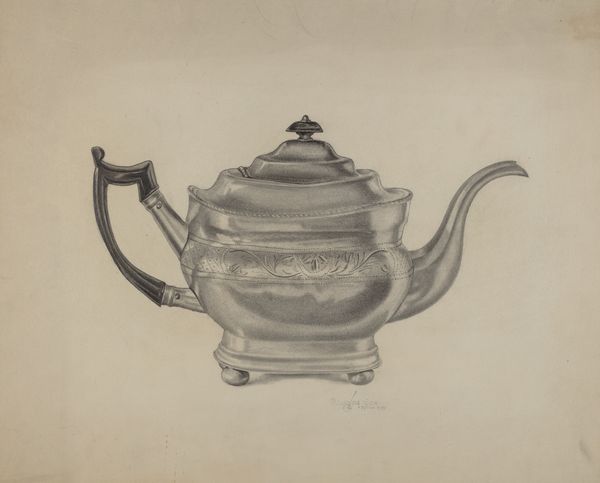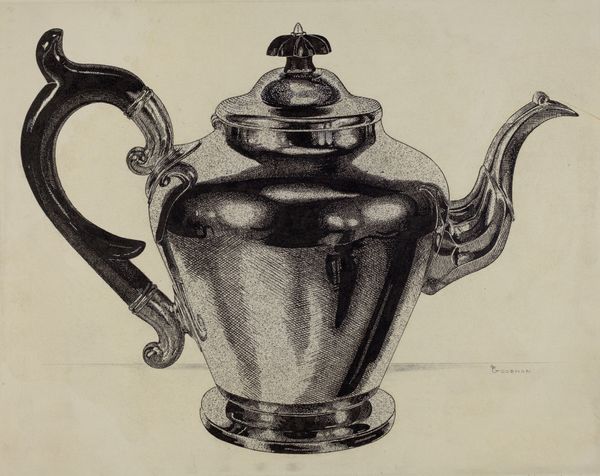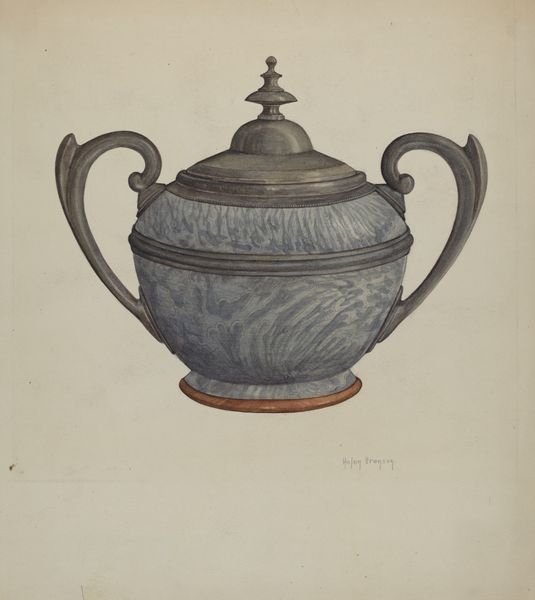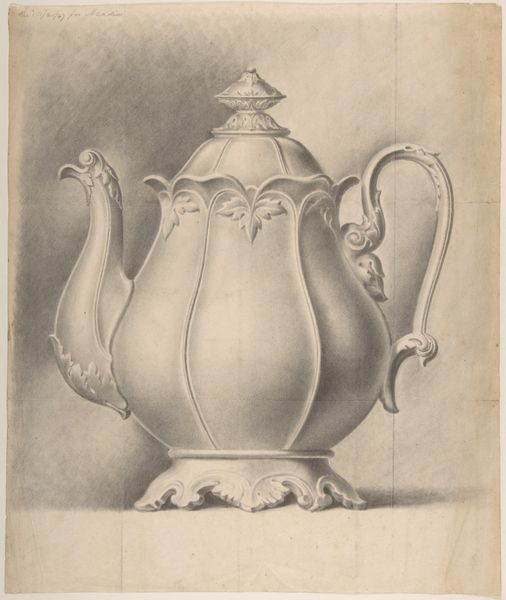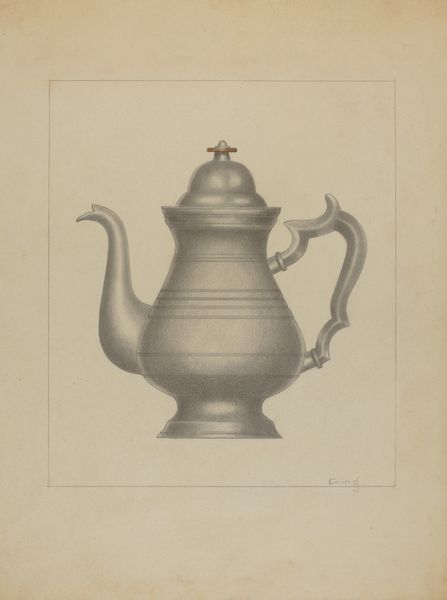
drawing, pencil
#
drawing
#
pencil
Dimensions: overall: 23.4 x 30.9 cm (9 3/16 x 12 3/16 in.) Original IAD Object: 9" high; 8 3/4" wide
Copyright: National Gallery of Art: CC0 1.0
Curator: I see an old friend here. It’s “Pewter Teapot,” a drawing made with pencil on paper by Frank Nelson, likely sometime between 1935 and 1942. What do you make of it? Editor: It evokes such a quiet, domestic mood, almost austere. It looks very meticulously drawn but also straightforward—almost like an industrial blueprint. Curator: Yes, a drawing like this asks us to consider labor, doesn't it? This wasn’t created as high art necessarily. It suggests a worker meticulously recording an object. Someone intimately involved with design or production, perhaps. We need to examine that labor of creation, from extraction of graphite for the pencil to shaping metal. Editor: It does force us to remember the artistry in the everyday, elevating it but also giving it a weight—making us ask who this teapot was for. And during the late 1930s into the war years… domestic objects could symbolize stability. Who had access to this stability then? Whose labor was poured into even its most mundane aspects? Curator: Precisely. The shine implied by the rendering reflects light, reflects value. The material culture surrounding tea, and who got to participate in those rituals, says volumes. There is so much inherent labor and material embedded even in such a seemingly innocuous, everyday object like this pewter teapot. The very form alludes to the specific knowledge and production of this moment in time, from industrial processes to consumer desire. Editor: Absolutely, and by rendering it so faithfully, Nelson almost throws us back into the very real context of the object's existence. Pewter's utilitarian history shifts into view. What sociopolitical implications rest inside even this teacup's quiet lines, hinting towards more comprehensive structures. We need to remember its complex, charged roots while acknowledging the material processes involved to create this singular artifact. Curator: Indeed. What seemed a straightforward depiction turns into an object freighted with socio-economic resonance, thanks to the careful eye of the artist. I come away now, thinking about pewter itself: its melting point, its malleability, its very accessibility. Editor: It really pushes us past mere formal considerations. It highlights that interplay between objects, materials, labor, and history that gives form meaning and heft to how even functional tools exist.
Comments
No comments
Be the first to comment and join the conversation on the ultimate creative platform.

